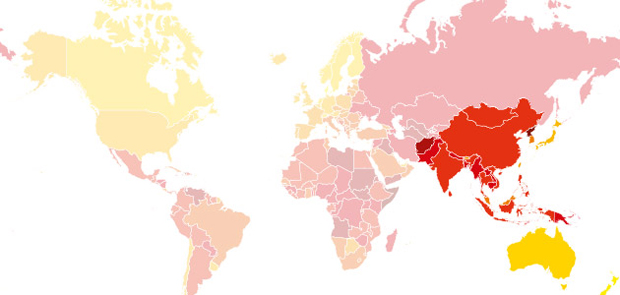The 2014 Corruption Perceptions Index scores of countries from Asia Pacific, the world’s fastest growing region, are a resounding message to leaders that, despite many public declarations and commitments, not enough is being done to fight corruption.
Out of the 27 Asia Pacific countries in the index, which account for nearly 61 per cent of the world’s population, the majority lag behind in their efforts in fighting corruption in the public sector, with 18 scoring less than 40 out of 100 (on a scale where 0 is highly corrupt and 100 very clean).
The Corruption Perceptions Index measures corruption in the public sector, which is accountable to the government. The persistent low scores ask a critical question to the leadership of Asian countries, which have full control of the conduct of its public services. This about the leadership.
For China and India, two countries where new leadership are pursuing anti-corruption drives, the index is a harsh reality check.
Corruption grows in China despite campaign
In 2014 we have heard a lot about government efforts to prosecute corruption, and corruption scandals in China. Its commitment to catch “tigers and flies” – public officials big and small – indicates the government is serious in its commitment. The government also recognised the needs for China’s international efforts, launching a “fox hunt” of officials overseas and withdrawing opposition to G20 anti-corruption measures.
However, China shows a downward trend in the index (with a score of 36) in comparison to last year (40), posing a hugely challenging question: how effective is a top-down approach when you don’t have transparency, accountable government and free media and civil society?
The recent prosecutions in China are largely seen as efforts to clamp down on political opponents of the regime as opposed to genuine anti-corruption commitments.
Given the penetration and impact of colossal corruption to every scale of state and society, the 2014 index score shows the need for a wide range of reforms, several of which are listed in this blog.
China’s attitude towards transparency and governance is important to the wider region, given its growing influence. If its spreads an economic model based on less transparency and accountability and excluding civil society, it will bode ill for the corruption fight in other countries too.
India’s score remains low
India’s vibrant democracy reveals the flip side of the coin. Despite the engagement, innovation and participation of vibrant civil society, media and people at large, corruption continues to be one of the country’s biggest challenges.
It reveals India’s bitter reality of political corruption: the inadequacy of structures of accountability and transparency to deter the corrupt and the access to such mechanisms by the people. The problem urges the conversion of political commitment to concrete action at the highest level of government. In May, a Transparency International report warned that India, along with other countries in South Asia, needs stronger law enforcement, corruption watchdogs and protection of whistleblowers.
Together with India (38) and China (36), the poor scores of other emerging markets in the region – such as Malaysia (52), Philippines and Thailand (both 38) and Indonesia (34) – indicate a general weak or ineffective leadership to counter corruption, posing threats for both sustainability of their economies and somewhat fragile democracies.
The Corruption Perceptions Index sends a message to countries at the crossroads: Myanmar (21) Afghanistan (12) and North Korea (8), grappling with the issue of fighting endemic corruption in their countries. All rank towards the bottom of the index. It sends a loud statement that leaders must create societies that are more systematically resistant to corruption. That means taking a more inclusive approach to fighting corruption.
Correction 13 September 2017: This post has been amended in order to reflect revised CPI 2014 scores. Originally this article mentioned 28 countries, but Samoa was removed from the CPI results, therefore there are instead 27 Asia Pacific countries to which we can refer.
















 Connect with us on Facebook
Connect with us on Facebook Follow us on Twitter
Follow us on Twitter